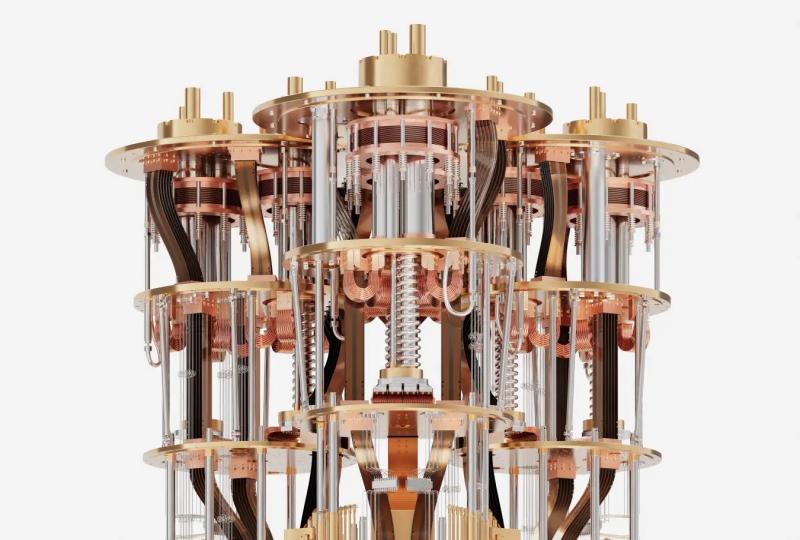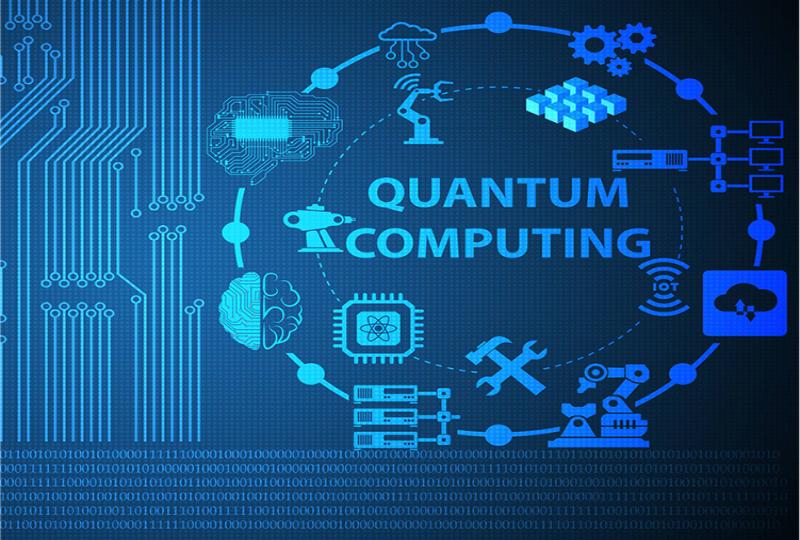Quantum Decoherence: Everything You Need to Know [2025]
2025.04.23 · Blog
Quantum mechanics reveals a fascinating world where particles can exist in multiple states simultaneously, become entangled across space, and remain indefinite until measured. In stark contrast, the classical world we experience is predictable and definite—objects have well-defined positions, and events unfold in a deterministic manner.
So, what happens between the quantum and classical realms? Quantum decoherence lies at the heart of this mystery. Quantum decoherence is the bridge between these two realms. It explains why quantum effects vanish in macroscopic systems and how quantum states lose their coherence through interactions with the environment.
Decoherence is not only essential for understanding the quantum-to-classical transition, but it also plays a pivotal role in fields like quantum computing, quantum information theory, and the quantum measurement problem. Mastering decoherence is a key step toward unlocking the full potential of next-generation quantum technologies.

What is Quantum Decoherence?
At the heart of quantum mechanics is the principle of superposition—the idea that a quantum system can exist in multiple states simultaneously. For example, an electron can be in a state that is a combination of spin-up and spin-down, and a photon can take multiple paths at once. This strange behavior is fundamental to quantum theory and has been confirmed by countless experiments.
However, such superpositions are extremely fragile. When a quantum system interacts with its surrounding environment—even in the most minimal way—it begins to lose its coherence. This process is known as quantum decoherence.
Decoherence describes the transition from a pure quantum state to a statistical mixture of states, not because of measurement in the traditional sense, but due to uncontrolled interactions with external degrees of freedom (like air molecules, photons, or vibrations in a substrate). These interactions cause the different components of the superposition to lose their phase relationship, which is crucial for interference and other quantum effects.
To understand this intuitively, imagine a coin spinning in the air. While in motion, it's not strictly heads or tails—it's in both states. But as soon as it lands (or is even touched by the air), the environment "nudges" it into choosing one outcome. In the quantum world, that "nudging" doesn't need to be a conscious measurement; any interaction that entangles the system with the environment leads to decoherence.
Decoherence vs. Collapse: Key Distinction
It's important to clarify: decoherence is not the same as wave function collapse. The wave function collapse is a concept tied to observation and measurement in the Copenhagen interpretation of quantum mechanics. Decoherence, on the other hand, happens continuously and naturally—even, even without an observer, merely through environmental interaction.
In essence, quantum decoherence provides a physical explanation for the emergence of classicality: why we don't see cats that are simultaneously alive and dead, or chairs that are here and there. It's the invisible process that forces quantum systems to behave in classically recognizable ways.
The Physics Behind Quantum Decoherence
To truly grasp quantum decoherence, we need to look at what happens when a quantum system interacts with its environment. This interaction is not a bug—it's an unavoidable feature of the real world. No quantum system is ever completely isolated. Whether it's stray photons, air molecules, or lattice vibrations in a solid, the environment is always present and entangling itself with the system.
Superposition and the Role of the Environment
In quantum mechanics, a system's state is described by a wave function. When a system is in a superposition, its wave function includes multiple possibilities at once. But once the system begins interacting with its environment, entanglement arises. The system and the environment become linked in such a way that they can no longer be described independently.
This entanglement spreads the information about the system's state into the environment, effectively dephasing the components of the superposition. The result is that the interference patterns—hallmarks of quantum behavior—vanish when we try to observe the system alone.
Density Matrices and Reduced States
To formalize this, physicists use density matrices instead of wave functions. A density matrix allows us to describe both pure quantum states and mixed states (where there is uncertainty or randomness). When we consider a system entangled with its environment, we can compute the system's reduced density matrix by mathematically tracing out the environment's degrees of freedom.
This operation shows that the off-diagonal terms—those that represent quantum coherence—tend to decay exponentially over time. This loss of coherence is decoherence in action. The system starts to behave like a probabilistic mixture of classical outcomes rather than a coherent quantum state.
A Simple Example
Consider a qubit (a quantum bit) initially in a superposition of |0⟩ and |1⟩. If it interacts with an external system—say, a stray photon or nearby atom—this interaction can entangle the qubit's state with that of the environment. As a result, any future measurement of the qubit will yield a definite outcome, but the quantum interference between |0⟩ and |1⟩ is gone. The system still has a quantum history, but its future evolution now looks classical.
Quantum Decoherence in Practice
Decoherence is one of the biggest practical challenges in building real quantum technologies, especially quantum computers.
Superconducting Qubits
Superconducting quantum computers, such as those developed by Google, SpinQ, and IBM, use qubits based on tiny superconducting circuits operating at near absolute zero. These qubits can maintain superposition and entanglement—but only for a limited time.
Even in ultra-cold environments, tiny vibrations, residual electromagnetic radiation, or interactions with surrounding materials can cause energy relaxation and dephasing, two key forms of decoherence. The time a qubit remains usable is known as its coherence time—typically on the order of microseconds to milliseconds. That's incredibly short, and improving it is a central research goal.
Trapped Ions
Trapped ion quantum computers (like those developed by IonQ and Quantinuum) use individual ions suspended in electromagnetic fields. These systems have inherently longer coherence times because ions are better isolated from their environment.
However, decoherence still arises from laser imperfections, fluctuating magnetic fields, and motional heating. These effects can lead to decoherence even in a vacuum.
Photonic and Solid-State Qubits
Photonic systems—where qubits are encoded in particles of light—tend to be more resistant to decoherence over long distances, which makes them attractive for quantum communication. But they're still subject to loss and noise from imperfect optical components.
Meanwhile, solid-state qubits such as quantum dots or NV centers in diamond offer better integration potential, but often suffer from complex and noisy environments at the atomic level, leading to faster decoherence.
Implications of Quantum Decoherence
The following are some of the most impactful areas where decoherence plays a central role.
The Limits of Quantum Computing
Quantum computers rely on superposition and entanglement to perform calculations beyond the reach of classical machines. But decoherence acts as a timer—once coherence is lost, quantum advantages vanish.
This makes error correction and decoherence control essential for building practical quantum systems. Without managing decoherence, a quantum computer becomes no more powerful than a classical one.
Quantum Information Theory
In quantum information theory, decoherence is treated as noise—a process that transforms pure quantum states into mixed states. Understanding decoherence allows researchers to define quantum channel capacities, analyze quantum communication protocols, and design secure quantum cryptographic systems.
Interestingly, the way decoherence "leaks" quantum information into the environment is also a key insight behind concepts like quantum Darwinism, which explains why certain classical states become more "stable" and observable.
The Quantum Measurement Problem
One of the deepest mysteries in quantum mechanics is: What actually causes a quantum system to “choose” a definite outcome upon measurement?
Decoherence offers a partial solution. It shows how apparent collapse emerges naturally through entanglement with the environment, turning superpositions into classical-like mixtures. While it doesn't eliminate the need for interpretations of quantum mechanics (like Many-Worlds, Copenhagen, or objective collapse theories), decoherence clarifies that the classical world is a result of quantum processes, not a separate layer of reality.
Bridging Quantum and Classical Worlds
Decoherence helps explain why we don't see macroscopic superpositions—like a table existing in two locations at once. It tells us why classical physics works so well at everyday scales, even though the universe is fundamentally quantum.
In that sense, decoherence is the missing piece that connects quantum rules to classical experience. It provides a natural, physical explanation for the emergence of the familiar world from quantum laws.
Philosophical Reflections: Measurement and Reality
Decoherence also plays a major role in interpreting quantum mechanics. While it doesn't “solve” the measurement problem entirely, it explains why we observe definite outcomes without requiring a conscious observer.
Some interpretations, like Many-Worlds, treat decoherence as the mechanism by which different branches of the universe become independent. Others see decoherence as explaining the apparent collapse without invoking metaphysics.
In either case, decoherence shifts the conversation: from when does collapse happen? to how does classicality emerge?
Techniques to Combat Quantum Decoherence
Researchers are exploring multiple strategies to fight decoherence:
-
Quantum error correction: Encodes information redundantly across multiple qubits to detect and correct errors.
-
Dynamical decoupling: Applies sequences of fast pulses to cancel out environmental noise.
-
Better isolation and materials: Designing cleaner, purer systems to reduce interactions with the environment.
-
Topological qubits: An emerging idea to encode information in nonlocal properties of a system, theoretically immune to local noise.
Conclusion and Future Outlook
Quantum decoherence stands at the heart of one of the most profound questions in physics: Why does the world look classical when the rules underneath are quantum? It gives us a framework to understand how the fragile, beautiful structure of quantum superpositions breaks down as systems interact with their environments, leaving behind the classical reality we experience.
From a practical standpoint, decoherence defines the boundary between theoretical potential and technological reality. Whether we're building quantum computers, developing secure communication channels, or exploring new models of computation, fighting decoherence is a core challenge.
The future of quantum science depends on how well we can understand, control, and perhaps even exploit decoherence. Several exciting directions lie ahead:
-
Fault-tolerant quantum computing: Using advanced error correction schemes to maintain coherence long enough for meaningful computation.
-
New materials and architectures: Engineering quantum devices with improved isolation, coherence times, and error resilience.
-
Deeper theoretical insights: Exploring connections between decoherence, thermodynamics, entropy, and the arrow of time.
-
Interpretation and foundations: Using decoherence to inform our understanding of quantum reality, without resorting to ad hoc assumptions.
In many ways, decoherence is not just a challenge—it's a guide. It shows us where the quantum world meets the classical, and how we might one day master the transition between them.
FAQs
How does decoherence differ from classical noise in quantum computing?
It's easy to confuse decoherence with classical noise—but they're fundamentally different.
-
Classical noise introduces randomness to a system (like flipping bits at random).
-
Decoherence transforms quantum information into inaccessible classical information by entangling it with the environment.
Decoherence is not just “noise”—it's a quantum process that turns coherent superpositions into classical mixtures. This distinction is critical in quantum computing and quantum control.
What is the role of decoherence in quantum biology and quantum gravity?
In quantum biology, decoherence helps explain why quantum effects are usually short-lived in warm, noisy biological environments—yet it also highlights how certain systems (like photosynthetic complexes or bird magnetoreception) may have evolved mechanisms to sustain quantum coherence briefly for functional advantage.
In quantum gravity, decoherence plays a conceptual role in bridging quantum mechanics with spacetime. Some theories propose that gravitational interactions might induce decoherence, explaining why macroscopic objects don't exhibit quantum superpositions—even without measurement.
Is decoherence reversible?
In principle, decoherence is unitary and reversible at the level of the entire system-plus-environment. However, in practice, it is effectively irreversible, because tracking and reversing all environmental entanglements is computationally and physically infeasible. This is why decoherence gives rise to the appearance of classical irreversibility.
How fast does decoherence happen?
Decoherence times can range from nanoseconds to milliseconds, depending on the system and its isolation:
-
In well-isolated superconducting qubits, coherence may last a few hundred microseconds.
-
In warm, noisy environments, decoherence can occur in femtoseconds or faster.
Generally, the more complex or exposed a system is, the faster decoherence happens.
Featured Content






